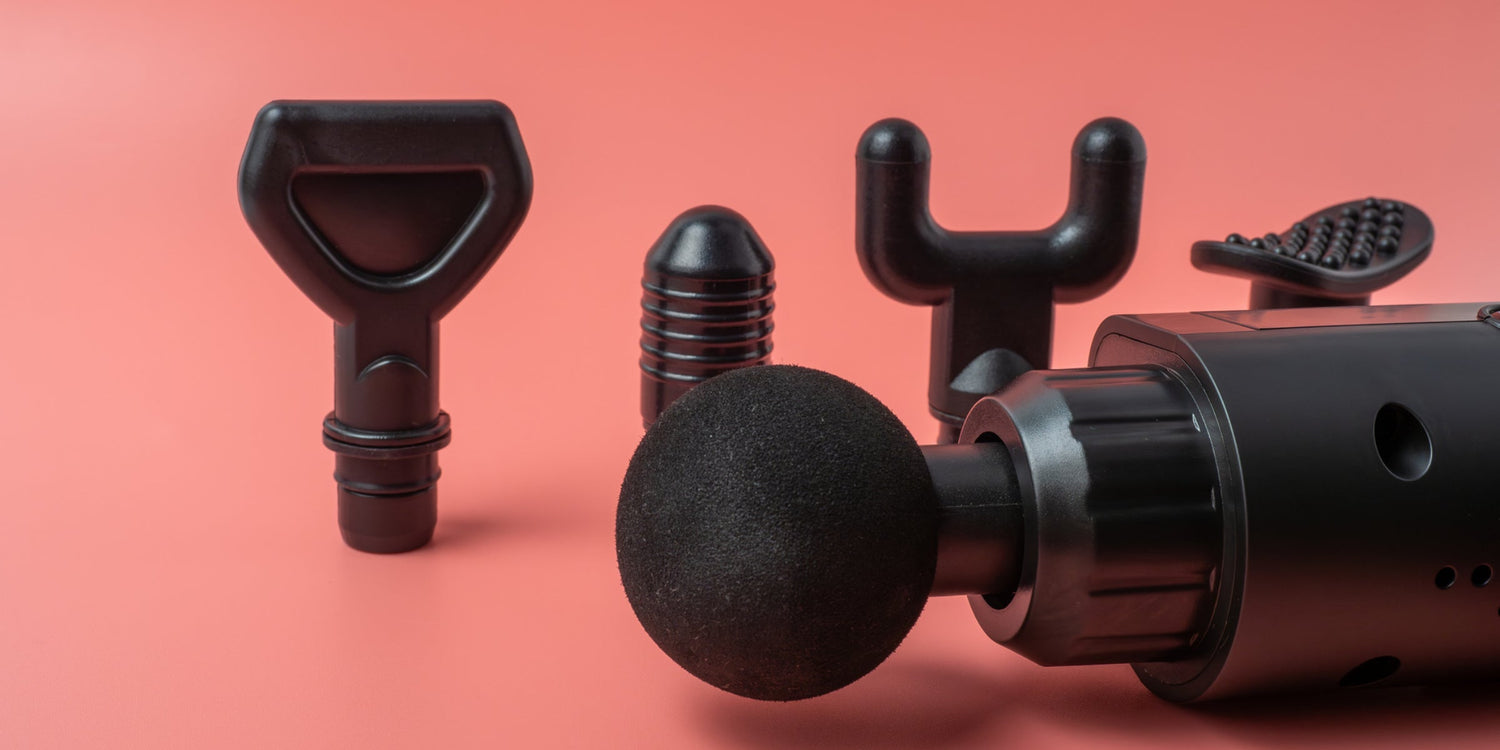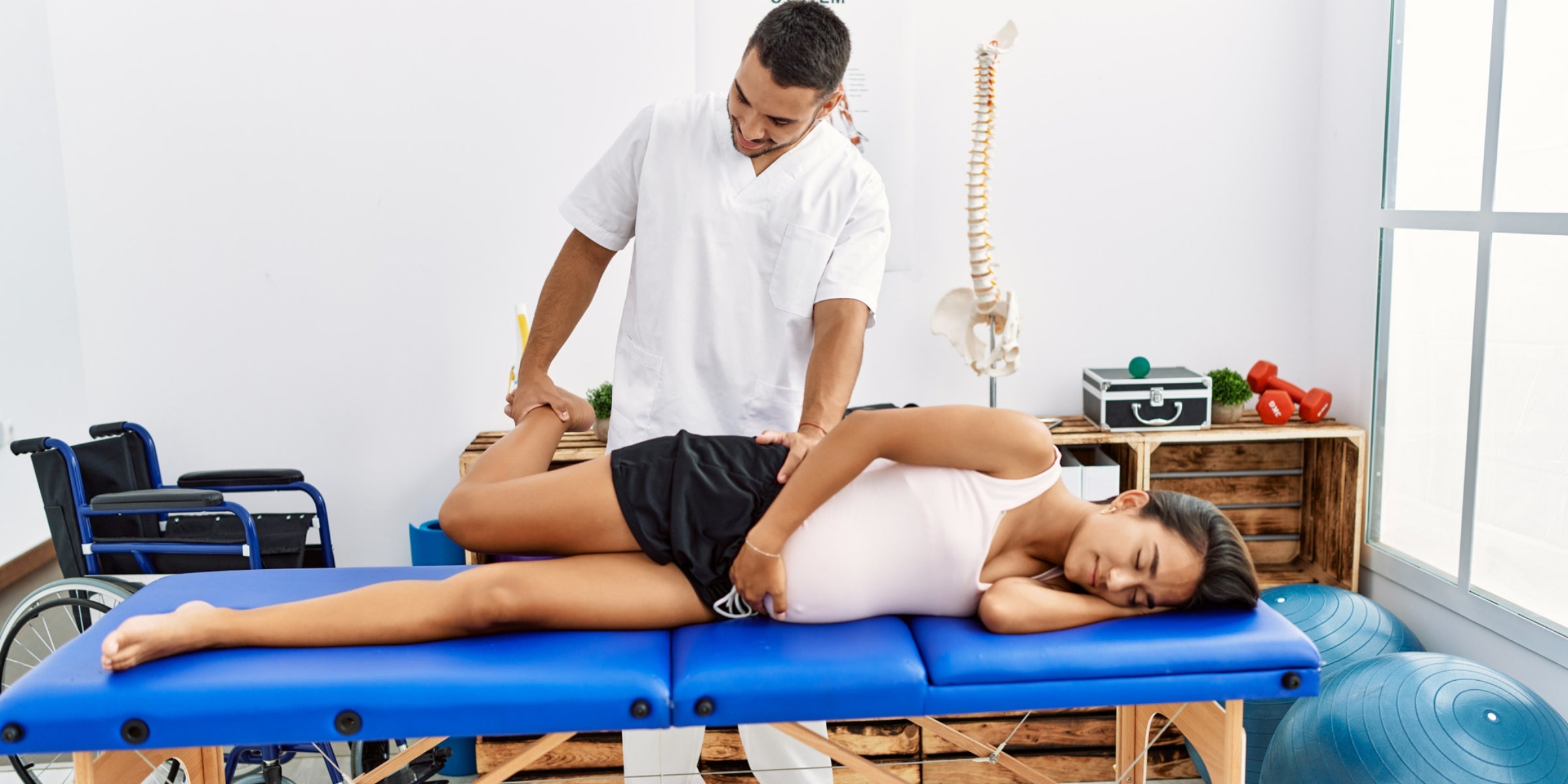Finding Relief: Using a Leg Massager to Alleviate Neuropathy

Stay tuned to our latest news
Living with neuropathy can be a daily battle against numbness, tingling, and debilitating pain. As the condition progresses, simple tasks like walking or standing can become excruciating. However, there may be a solution to help provide much-needed relief - a leg massager.
Leg massagers have emerged as a popular and effective tool for managing the symptoms of various leg issues including neuropathy. By targeting the affected areas with soothing massage techniques, these devices can help stimulate blood flow, reduce muscle tension, and alleviate the discomfort associated with nerve damage.
So, without further ado, let's learn how using a leg massager can be a game-changer for those living with neuropathy. Discover the power of leg massagers and take back control of your life and reclaim your mobility.
What Is Peripheral Neuropathy?

Peripheral neuropathy refers to a condition characterized by damage to the peripheral nerves, which are responsible for transmitting signals between the central nervous system and the rest of the body. This disorder can affect both motor and sensory nerves, leading to a wide range of symptoms such as numbness, tingling, weakness, and pain in the affected areas.
Early diagnosis and treatment are crucial in managing peripheral neuropathy and preventing further nerve damage. With appropriate management, individuals with peripheral neuropathy can often find relief from their symptoms and regain some normalcy in their lives.
What Causes Peripheral Neuropathy?
Peripheral neuropathy is a condition characterized by damage to the peripheral nerves, resulting in pain, tingling, and weakness in the affected areas. There are various causes of peripheral neuropathy, including:
- Diabetes: High blood sugar levels can damage the nerves over time, leading to peripheral neuropathy. It is estimated that about 60-70% of people with diabetes develop this condition.
- Nutritional deficiencies: Deficiencies in certain vitamins, such as vitamin B12, vitamin E, and folate, can contribute to nerve damage, resulting in peripheral neuropathy. Poor diet or malabsorption disorders can lead to these deficiencies.
- Autoimmune disorders: Conditions like rheumatoid arthritis, lupus, and Sjogren's syndrome can cause the immune system to attack the nerves, leading to peripheral neuropathy.
- Chronic alcohol abuse: Excessive and long-term alcohol consumption can damage the nerves, affecting their ability to transmit signals properly.
- Inflammatory conditions: Chronic inflammatory conditions like vasculitis (inflammation of blood vessels) or sarcoidosis (abnormal collections of inflammatory cells) can cause nerve damage and peripheral neuropathy.
- Chemotherapy: Certain chemotherapy drugs used to treat cancer can cause nerve damage, leading to peripheral neuropathy. The severity and duration of neuropathy may vary depending on the type and dosage of the medication.
- Infections: Certain viral or bacterial infections, such as Lyme disease, HIV/AIDS, and shingles, can damage nerves and result in peripheral neuropathy.
What Are the Symptoms of Peripheral Neuropathy?
One of the most common symptoms experienced by individuals with peripheral neuropathy is pain. This pain can be described as a burning or tingling sensation and is often felt in the hands or feet. Additionally, numbness and tingling are also commonly reported symptoms. This sensory disturbance can make it difficult for individuals to feel sensations such as temperature or pain in affected areas.
Muscle weakness is another symptom typically associated with peripheral neuropathy. This weakness can lead to difficulty performing certain tasks or activities that require strength, such as gripping objects or climbing stairs. Furthermore, individuals with peripheral neuropathy may also experience a heightened sensitivity to touch. Even the slightest touch can cause pain or discomfort in affected areas.
Loss of reflexes is another common symptom of peripheral neuropathy. Reflexes that are usually automatic, such as the knee jerk reflex, may become diminished or absent in individuals with this condition.
How Does Neuropathy Affect Your Daily Life?

Neuropathy can affect various aspects such as walking, sleep quality, ability to perform daily tasks, and social interactions.
Individuals with neuropathy often struggle with walking due to the pain and numbness in their feet and legs. The sensation of walking on pins and needles can make it difficult to maintain balance and coordination, leading to a fear of falling. As a result, mobility becomes limited, hindering independence and participating in physical activities.
Additionally, sleep quality is compromised for those with neuropathy. The constant discomfort and pain can make it challenging to fall asleep and stay asleep throughout the night. Sleep deprivation can lead to fatigue and reduced cognitive function, making daily tasks even more difficult to perform.
Speaking of daily tasks, individuals with neuropathy often face challenges in completing them. The pain, numbness, and muscle weakness can make activities such as cooking, cleaning, and even getting dressed a painful and exhausting process.
Furthermore, neuropathy can also negatively impact social interactions. The constant pain and discomfort can make it difficult for individuals to engage in social activities and enjoy outings with friends and family. The fear of being unable to keep up or experiencing severe pain can lead to isolation and feelings of frustration.
5 Common Treatment Options for Neuropathy?

There are five common treatment options for neuropathy: medications, topical treatments, physical therapy, lifestyle changes, and alternative therapies.
Medications are commonly used to manage neuropathy symptoms. Drugs such as anti-seizure medications (e.g., gabapentin), antidepressants (e.g., amitriptyline), and pain relievers (e.g., tramadol) can help alleviate pain and improve quality of life. However, these medications may cause side effects such as dizziness, drowsiness, or nausea.
Topical treatments involve applying creams or gels directly to the affected areas. These products often contain numbing agents, such as lidocaine, that provide temporary relief from pain. While topical treatments can be effective, they may not address the underlying cause of neuropathy.
Physical therapy can help improve muscle strength, balance, and mobility, thereby reducing neuropathy symptoms. Physical therapists may provide exercises and techniques to promote nerve regeneration and decrease pain. However, it is essential to consult a professional to ensure the proper application of these therapies.
Lifestyle changes, such as managing blood sugar levels for diabetic neuropathy or avoiding repetitive motions for entrapment neuropathy, can prevent symptom progression. These changes may include adopting a healthy diet, exercising regularly, proper posture, and avoiding tobacco and excessive alcohol consumption.
Alternative therapies, like acupuncture, herbal supplements, and biofeedback, aim to complement conventional treatments. While some patients report symptom relief from these therapies, scientific evidence supporting their effectiveness is limited. It is crucial to consult a medical professional before incorporating alternative methods.
Can a Leg Massager Provide Neuropathy Relief?

A leg massager can provide significant relief for individuals suffering from neuropathy. This innovative device offers a range of benefits that effectively target the symptoms and discomfort associated with this condition.
Improved circulation is one of the key advantages of using a leg massager. By applying gentle pressure and rhythmic movements, the massager stimulates blood flow in the legs and feet. This enhanced circulation can help alleviate the numbness and tingling sensation caused by neuropathy, providing much-needed relief.
Reducing stress is another crucial benefit. Neuropathy often induces anxiety and frustration due to the constant discomfort it causes. A leg massager offers a calming and soothing effect, promoting relaxation and alleviating stress levels. This can greatly improve the overall well-being and mental state of individuals struggling with this condition.
Comfort and relaxation are further advantages of using a leg massager. The device provides a gentle and comforting massage, relieving the pain, aches, and muscle tension that neuropathy often triggers. This relaxation of the leg muscles can contribute to an overall sense of comfort and relief from the symptoms of neuropathy.
Furthermore, a leg massager may potentially help with balance and mobility. Neuropathy can cause a loss of sensation and muscle weakness in the legs, impacting balance and mobility. Regular use of a leg massager can help stimulate and strengthen the leg muscles, potentially improving stability and mobility in individuals with neuropathy.
Takeaway
A leg massager can be a game-changer for individuals living with the daily challenges of neuropathy. By targeting the affected areas with soothing massage techniques, these devices can help stimulate blood flow, reduce muscle tension, and alleviate the discomfort associated with nerve damage.
The improved circulation, reduced stress, and increased comfort and relaxation provided by a leg massager can make a significant difference in the lives of those with neuropathy. Additionally, the potential benefits for balance and mobility can help restore some normalcy and independence in performing daily tasks.
For those seeking relief from the numbness, tingling, and debilitating pain of neuropathy, incorporating a leg massager into their treatment regimen may be a valuable solution. By taking advantage of this innovative tool, individuals can take back control of their lives and reclaim their mobility, ultimately improving their overall quality of life. The power of leg massagers should not be underestimated in the management of this challenging condition.
Renpho Health Tips
-

Understanding and Managing Migraines During Pregnancy
June 9, 2024
Read more >
-

Is It Safe to Use a Massage Gun During Pregnancy? What You Need to Know
June 6, 2024
Read more >
-

Pregnant and Achy? Discover How a Leg Massager Can Provide Relief and Improved Circulation
June 3, 2024
Read more >
-

Easing the Path to Motherhood: How Reflexology Can Help Expectant Mothers
April 8, 2024
Read more >
-

Beginner's Guide to Foot Massages During Pregnancy
February 29, 2024
Read more >






